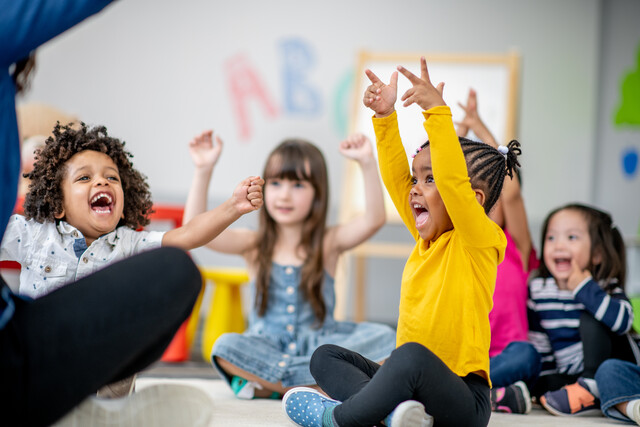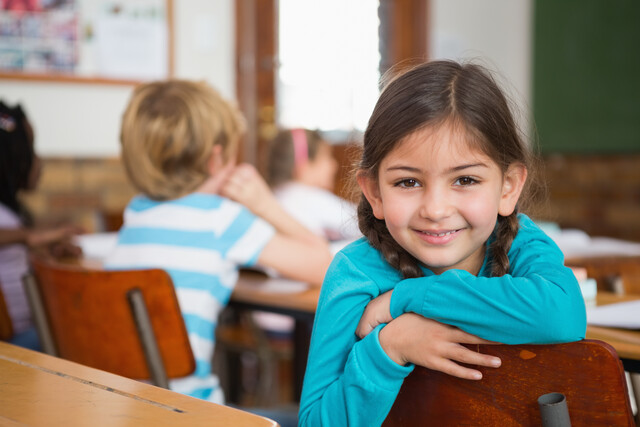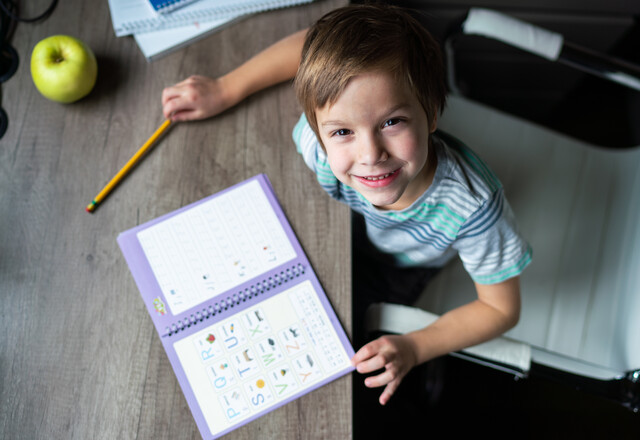In this article, we will look at shyness, including what it is, why some children are shy, and ways that adults can help children overcome their shyness. This is not to say that no child should ever be shy or that there is something inherently wrong with being a shy person. While some children may have a more introverted personality style, others that are shy to the point that it may hinder their involvement in life in general. Those are the people that we want to help to overcome some of that shyness.
According to the American Psychological Association, shyness is the "tendency to feel awkward, worried or tense during social encounters, especially with unfamiliar people." Those who are severely shy may have some physical symptoms during these awkward periods, such as sweating, blushing, and an upset stomach. Those people often worry about what others think about them, and they tend to withdraw from social interactions.
If you think about it, using that definition, most of us have been shy at one time or another. It is not being shy here or there that is an issue, but it is when it is on a consistent basis and keeps the child from interacting with others or from engaging in activities. Children who avoid interaction and activities out of shyness may lose the benefits that they both offer.
Shyness is not believed to be something that we are born with. Rather, it is something we learn by our interactions with the world around us. Shyness typically comes from a combination of three major factors, including excessive self-consciousness, excessive negative self-evaluation, and excessive self-preoccupation, according to the Shyness Research Institute at Indiana University Southeast.
If you have a child who is extremely shy you have probably already identified it, just by watching the way that they try to avoid interaction. They may even hide behind you whenever there are social situations that you are present for. However, if you are around other children, whether as a teacher, coach, or in another situation, you can often identify an extremely shy child by the following behaviors.
- They try to avoid social interaction.
- They may have a few or no friends.
- They try to avoid activities that most children would find pleasant.
- They may have low self-esteem or a negative attitude.
- They may spend a lot of time engaged in anti-social activities, such as playing computer games, video games, or watching television.
A child doing that once in a while is not of concern. Some children may come across an activity or social situation that just makes them feel uncomfortable to the point that they want to avoid it. If this is not how they normally behave, the activity may just be out of their comfort zone and is nothing to worry about. If they avoid social interaction on a regular basis, and it inhibits them from having fun and getting involved with friends, it could be detrimental to their development growth. It could also put them in a position to be bullied.
Did you know?
There is a big difference in being an introvert and being shy. Introvert personality types are energized by spending time alone. They may engage in social interaction and then feel that they need to spend some time alone following it. On the other hand, those with shyness issues desperately want to be involved with other people, but they feel that they cannot make a connection, or cannot get over the anxiety of it. They may feel that they do not know how to connect with others or that they will not be liked once they try it. Introversion should not be confused with shyness, as they are two different things, and there are usually no problems with being an introvert, for most people.
If you know a child who has a problem with shyness and it is hindering their ability to engage in activities and make friends, there are some things that you can do to try and help them overcome it.
- Discuss shyness with your child, as well as what they feel when they are trying to avoid interaction.
- Offer encouragement to try new things and be supportive of the social activity they do engage in.
- Rehearse, or role play, social interactions. Some children may not feel like they know how to make friends, so role playing this will help them feel more comfortable.
- Invite another child over to play so that they will have the social interaction, without a big group setting.
- Talk with your child's teacher to see what they can do to help while they are at school.
- Try to avoid labeling your child as shy. Instead, just encourage social interaction, without labeling them as being shy. Once children are labeled something, they often get stuck in a rut of repeating the behavior with which they have been labeled.
- Find activities that do interest your child and let them get involved in those. Whether it is karate or reading, the more they can engage in activities that they enjoy, the more confident that they will become.
- Focus on raising their self-esteem and helping them to feel more confident. The more confident they feel, the less shy that they will feel in social situations.
As mentioned, a shy child may become a target for bullies. The more that parents can help them feel confident and comfortable with themselves, the more successful that they will be at preventing the bullying, and being able to stand up to a bully if it does happen.
At this point, we have spent a lot of time learning about bullying, including what it is, who bullies, and why. We have even looked at ways to help teach children kindness and ways that they can stand up to a bully. However, one thing that we have not touched on yet, is what if the bully is your child? We tend to think of the bully as being someone else's child, rather than our own. Even faced with the notion that it is their child that is the bully, many parents may find it difficult to believe.
In this article, we will look at the idea of the bully being your child, including how to address the issue, and ways to make changes to try and end it. Through this information, you can also gain insightful ideas on how to help prevent your child from becoming a bully in the future.
Nobody wants to think that the bully is his or her own child. Nevertheless, it has to be someone's child, so even those parents who do not want to think their child is the one, that is the case with some of them. When parents find out that their child is the bully, they may react by not caring, or by being a bit apathetic about it, or they may be shocked, depending on how they believe their child is behaving when they are not around.
While it may come as a shock to some parents that the bully is their child, they can take that information to help address the problem. Parents can play a big role helping to prevent and to address bullying at every educational level. When teachers have identified a bully it is important that they notify the parents, so tthat hey can get involved in helping to address the issue.
Therefore, just what is a parent to do if they find out that it is their child who is doing the bullying? A lot! Here are some of the things that parents can do at the elementary school age level to help address their child being a bully.
- Discuss bullying with your child, including what it is, what it looks like, and that it is not okay to do.
- Try to find out why it is that the child is bullying. There may be underlying issues that are provoking it, such as what is going on in the home, low self-esteem, or that they are trying to move up the social popularity ladder.
- Help them find alternative things that they can do to achieve the results that they want, rather than bullying. Offer alternative ways to handle fitting in such as making friends, becoming more popular without picking on others, and healthier ways to handle their emotions.
- Parents should work with the school to help end the problem. The administrators and school counselor may offer some suggestions to help address it both on and off the school grounds.
- Be a good role model. If there is any type of bullying going on in the home, address it and end it. Sometimes children who are bullies have a parent or older sibling in the home that is a bully.
- Help children to get in touch with their feelings so that they can identify them and find a healthier way to work through them. In addition, help children to build empathy, as discussed previously. When they have empathy they will understand how they are making the other person feel when they bully them, and hopefully will become less likely to engage in the behavior.
- Look for good things your child is doing and compliment him or her on them. Rather than putting all the focus on the bullying, try to catch them being good and compliment them on that behavior.
- Try to avoid labeling the child as being a bully. In other words, do not refer to him or her as a bully. As previously mentioned, children will often end up living up to names with which they have been labeled.
Addressing bullying in your own family means making changes. There are changes that will need to take place both at home and at school. Nevertheless, with some consistent effort, the change will happen. If your child is the bully and you have tried to get them to stop or feel that your efforts are not working, do not hesitate to enlist the support of a professional counselor or psychologist. They have been trained to deal with such issues and will help to get to the bottom of why it is happening, as well as to help you with effective ways to bring about change.
Getting involved can be done at schools, as well as by establishing community anti-bullying groups. Both can be effective ways to help make your community safer and bully free.
In schools, anti-bullying groups can be formed that consists of teachers, school staff, and students. In the community, groups can be formed that are aimed at teaching kids about bullying. Creating such a group is easy, effective, and can be taken on the road, visiting different schools in the community.
There are many ways to raise awareness about the problem of bullying. Chances are you may even have a few in mind of your own that are not on this list. The more ways you can think of to get the message out there, the better. As mentioned earlier, children learn in different ways, so being able to address the issue from multiple learning styles is ideal.
Here are some ways that school and community groups can address awareness.
- Organize anti-bullying and bullying awareness events at school or in the community. This will help to get the information out there and help to prevent it from happening.
- Get some kids together to put on a play that focuses on bullying. It will help open a dialogue on the topic and get the community interested. Moreover, people usually enjoy learning things from performances.
- Provide books with bullying themes to children. Either the books can be given to them, put into a lending library, set up as a display in the school or public library, or someone from your group can go to elementary schools and read the books to children, followed by a discussion.
- Hold an activity time where children create awareness posters to put up in the community and in schools.
- Keep the discussions going. You can do this by doing the above things on a regular basis, as well as contacting your local newspaper so that articles are published to cover the topic.
These are just a few ideas. You can also create a list of your own. Doing a variety of events will help to keep people interested and the community aware of what is going on. Others in your community, school, and group may also have ideas for helping to prevent, address, and to end bullying.


























